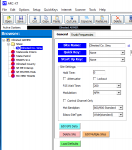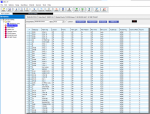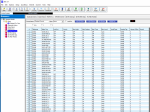- Joined
- Mar 31, 2022
- Messages
- 2
This is a general question, but location may be important - Olmsted Co., Rochester area (Stewartville).
I'm fairly new to scanning and trying to wrap my head around all the trunking stuff. Using the ARC-XT software; I got my BCD996P2 programmed with the Olmsted Co. Simulcast (ARMER) frequencies and added the appropriate talkgroups that I was interested in (mainly Law Enforcement/State Patrol.) I have a tuned antenna (806-866Mhz) on the roof, and running ultra low-loss cable (50 ft.). However, I don't seem to be picking up much of anything.
I'm wondering if the number of talkgroups that get added slows things down, or if they just act as a "reference" for when the control channel is activated. Often enough I can see the signal icon light up at freq. 853.6125, but I'm not hearing anything. My assumption is it's communication in a talkgroup that I haven't added. I also seem to get a few "Copy That" transmissions, but not getting the other side of the conversation.
For reference, I have the following talkgroups added: (295 Total)
Statewide Interop, MNDPS BCA, MNDPS State Patrol, MNDPS 911, Olmsted Co., SE MN Interop, SE MN EMS Hailing, Mayo Clinic Medical Transportation
Thanks in advance for any insights.
I'm fairly new to scanning and trying to wrap my head around all the trunking stuff. Using the ARC-XT software; I got my BCD996P2 programmed with the Olmsted Co. Simulcast (ARMER) frequencies and added the appropriate talkgroups that I was interested in (mainly Law Enforcement/State Patrol.) I have a tuned antenna (806-866Mhz) on the roof, and running ultra low-loss cable (50 ft.). However, I don't seem to be picking up much of anything.
I'm wondering if the number of talkgroups that get added slows things down, or if they just act as a "reference" for when the control channel is activated. Often enough I can see the signal icon light up at freq. 853.6125, but I'm not hearing anything. My assumption is it's communication in a talkgroup that I haven't added. I also seem to get a few "Copy That" transmissions, but not getting the other side of the conversation.
For reference, I have the following talkgroups added: (295 Total)
Statewide Interop, MNDPS BCA, MNDPS State Patrol, MNDPS 911, Olmsted Co., SE MN Interop, SE MN EMS Hailing, Mayo Clinic Medical Transportation
Thanks in advance for any insights.






